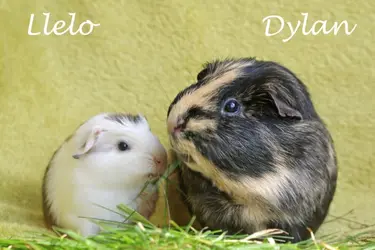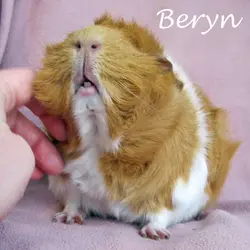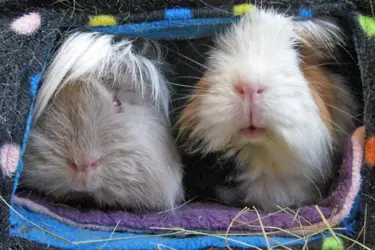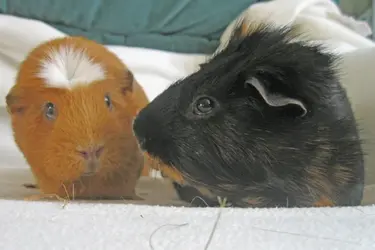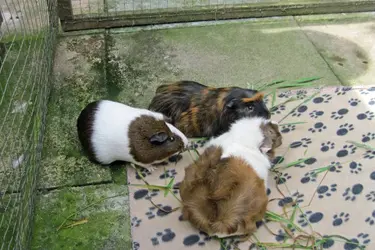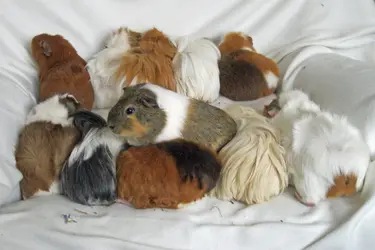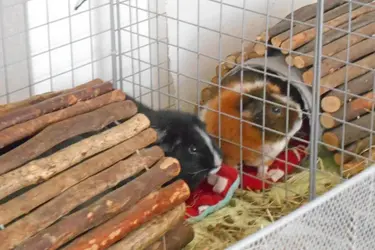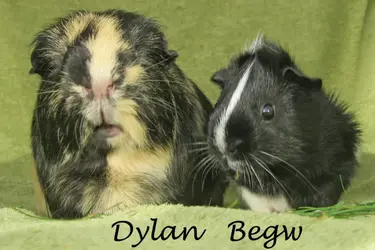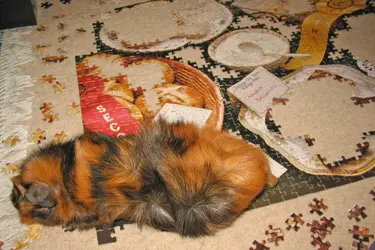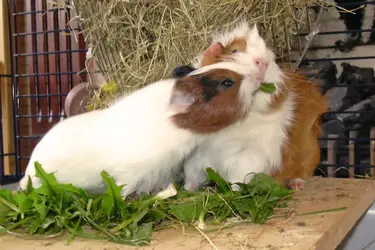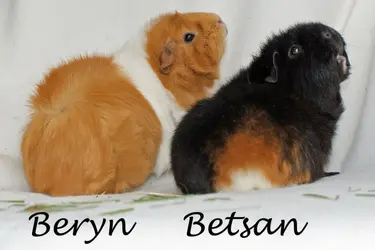Introduction
1 When is a 'single' really a single?
- Bought singles
- Fallen-out and aggressive piggies
- Bereaved guinea pigs
- No interest in other guinea pigs
- Disabled and special needs guinea pigs
2 Companionship options (with pros and cons)
- Dating
- De-sexing (neutering or spaying)
- Living alongside
- Buying a baby companion
3 Caring for single guinea pigs
- Stimulation and interaction
- When cavy and human expectations clash
- What are the signs that your guinea pig is feeling lonely?
- Picky eating and the treat trap
Conclusion
This guide is an article I have written for Guinea Pig Magazine issues 48 and 49 (January and March 2019).
It is the propriety of GPM and is being shared on here with the magazine's permission.
Guinea Pig Mag
Introduction
Guinea pigs are ground roaming prey animals that live in strictly hierarchical groups and that rely very much on the presence and interaction with others of their kind. The perception of guinea pigs as a species in their own right (and not just an easy and cheap cuddly ‘starter pet’) is sadly still spreading only slowly into wider consciousness. This also includes the vital need for companionship.
Switzerland with its direct democracy is still the only country where it is against the law to sell or own any group animals as single pets since 2004, and that includes specifically guinea pigs in their pioneering animal protection law, which has been brought by through public pressure and has passed the mandatory public vote, even though at the time the companion concept especially for guinea pigs was much ridiculed in the press. In all other countries pet shops and breeders can sadly still sell single guinea pigs.
While there are some true-blue single guinea pigs, the majority of what is deemed single guinea pigs has sadly been failed, some of them repeatedly, by humans and far too often by sheer ignorance or in some cases human needs taking precedence of cavy needs.
In the following I am going firstly to look at single guinea pigs in their various forms and situations and what can be done to improve them. In a second part I am exploring the various options of companionship and their pros and cons before I am looking at the challenges owners face when the full brunt of the round the clock social interaction is falling on them and what particular problems to be aware of in the last part of this article series.
More information on guinea pigs as a species in this link here: Guinea Pig Facts - An Overview
1 When is a 'single' really a single?
- Bought singles
- Fallen-out and aggressive piggies
- Bereaved guinea pigs
- No interest in other guinea pigs
- Disabled and special needs guinea pigs
2 Companionship options (with pros and cons)
- Dating
- De-sexing (neutering or spaying)
- Living alongside
- Buying a baby companion
3 Caring for single guinea pigs
- Stimulation and interaction
- When cavy and human expectations clash
- What are the signs that your guinea pig is feeling lonely?
- Picky eating and the treat trap
Conclusion
This guide is an article I have written for Guinea Pig Magazine issues 48 and 49 (January and March 2019).
It is the propriety of GPM and is being shared on here with the magazine's permission.
Guinea Pig Mag
Introduction
Guinea pigs are ground roaming prey animals that live in strictly hierarchical groups and that rely very much on the presence and interaction with others of their kind. The perception of guinea pigs as a species in their own right (and not just an easy and cheap cuddly ‘starter pet’) is sadly still spreading only slowly into wider consciousness. This also includes the vital need for companionship.
Switzerland with its direct democracy is still the only country where it is against the law to sell or own any group animals as single pets since 2004, and that includes specifically guinea pigs in their pioneering animal protection law, which has been brought by through public pressure and has passed the mandatory public vote, even though at the time the companion concept especially for guinea pigs was much ridiculed in the press. In all other countries pet shops and breeders can sadly still sell single guinea pigs.
While there are some true-blue single guinea pigs, the majority of what is deemed single guinea pigs has sadly been failed, some of them repeatedly, by humans and far too often by sheer ignorance or in some cases human needs taking precedence of cavy needs.
In the following I am going firstly to look at single guinea pigs in their various forms and situations and what can be done to improve them. In a second part I am exploring the various options of companionship and their pros and cons before I am looking at the challenges owners face when the full brunt of the round the clock social interaction is falling on them and what particular problems to be aware of in the last part of this article series.
More information on guinea pigs as a species in this link here: Guinea Pig Facts - An Overview
Last edited:

